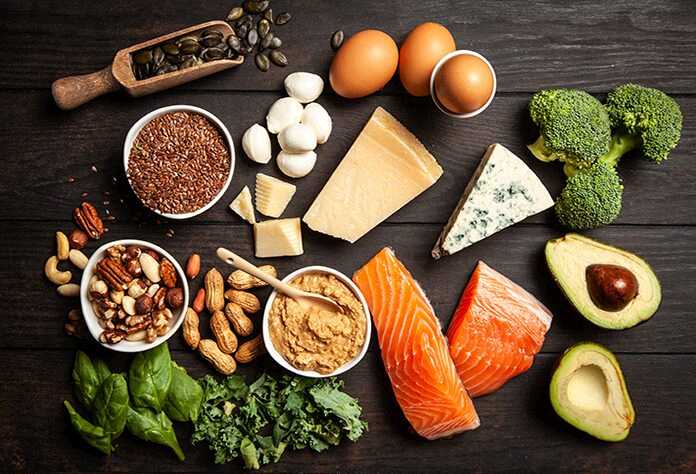
The keto diet is a low-carb, high-fat diet. While variants of this diet may have been used in ancient times, it was only in the 20th century that the keto diet has been actively used in medicine, most notably to reduce epileptic seizures.
But is the keto diet the best diabetes diet? Let’s find out.
What Are the Benefits of the Keto Diet?
A 2017 study found that when compared to a low-fat diabetes diet over 32 weeks, the keto diet helped people improve their A1C test results. This confirms other short-term studies which suggest that low-carb diets such as the keto diet may help people manage type 2 diabetes.
Also, by limiting your carb intake, this diet can naturally lower your blood sugar levels. This is because the diet excludes or limits many carbs-rich foods that can increase blood sugar levels, including white bread, pasta, white rice, fruits, beans, lentils, yogurt, and sugar.
The keto diet can also promote weight loss. Fatty tissue promotes insulin resistance, so when you lose weight, you make it easier for your body to use the available insulin, whether this is produced by the pancreas or injected.
Why Is the Keto Diet Good for Diabetics?
On a normal diet, your body turns carbs into glucose for the cells to use as energy. But when you limit your carbs intake to 50 grams a day and eat more fat, your body starts using fat for energy. This process is called ketosis and results in ketone bodies, a new source of energy for your body.
The keto diet doesn’t eliminate carbs entirely but reduces them considerably. On a standard keto diet, you will be getting around 75% of your calories from fat and only 5% from carbohydrates – entering ketosis after just three or four days.
Keto Diet Foods: The Good and the Bad
Following a keto diet means giving up, or at least significantly lowering your intake of most or all these foods:
- Grain products, including bread, cereal, cookies, cake, pasta, and rice
- Legumes such as peas, beans, lentils
- Starchy vegetables, including corn and potatoes
- Milk and yogurt
- Most types of fruits
- Processed foods that contain sugar
- All foods rich in added sugar, including ice cream
The keto diet is not the easiest diet to follow. It requires not only careful eating habits but also for you to read food labels carefully. You will need to know how much carbs are in everything you eat and add them up to make sure you stay within the limit.
However, the keto diet still leaves room for plenty of delicious foods:
- Non-starchy vegetables, including tomatoes, lettuce, cabbage, pepper, broccoli, kale, spinach, and avocado
- Nuts and seeds
- Natural sources of fat such as eggs, meat, and seafood
- Cheese
- Poultry
- Butter, olive oil, and coconut oil
The Keto Diet: Diabetes Under Control
The keto diet could help you better control diabetes. However, it’s important to remember that this diet increases ketones. This means that if you suffer from a kidney disease, whether as a result of diabetes or not, you should avoid this diet. Also, you should avoid it if you have gestational diabetes or if you are pregnant.
Ultimately, the keto diet may not work for all diabetics. Different people may react differently to it. The only way to find out if it will work for you is to try it for a while. If you are taking medication for diabetes, talk to your doctor first.











